A few summers ago, I was gearing up for a long trail run in the mountains when a friend asked me, “Are hydration backpacks really worth it? I’ve heard they can be a hassle to maintain.” As someone who’s spent years testing outdoor gear and advising fellow adventurers, I’ve seen hydration backpacks save the day on grueling hikes—and I’ve also dealt with their quirks firsthand. Hydration backpacks are a game-changer for staying hydrated on the move, but they’re not perfect. Today, I’m diving into the disadvantages of hydration backpacks, sharing what I’ve learned from experience to help you decide if they’re right for your adventures.
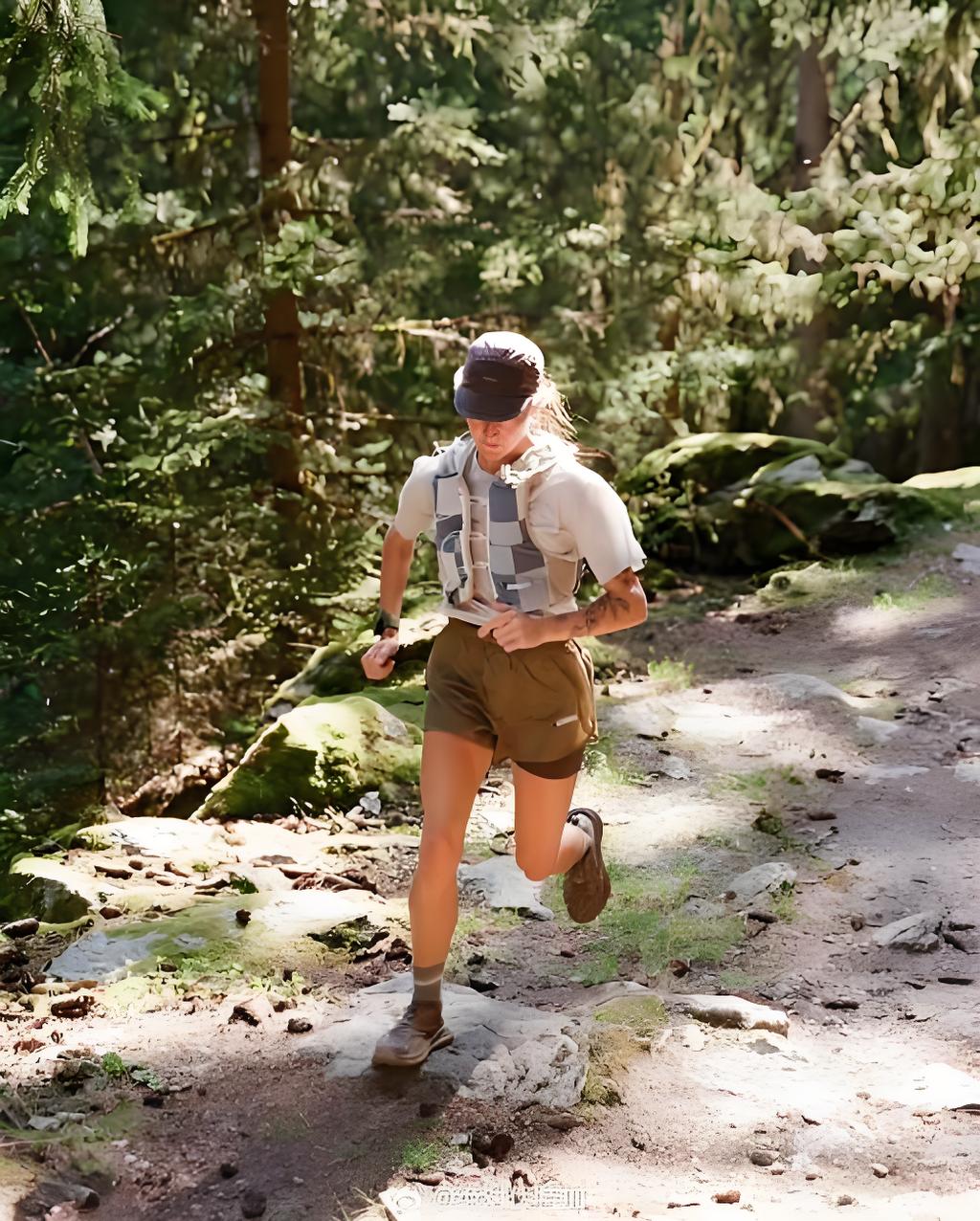
What Are Hydration Backpacks?
Hydration backpacks are specialized backpacks with a built-in water reservoir (or bladder) and a drinking tube, allowing you to sip water hands-free during outdoor activities. Made from flexible, food-grade materials like TPU (thermoplastic polyurethane), the bladder typically holds 1-3 liters of water. These packs are popular for hiking, trail running, cycling, and other endurance activities where easy access to water is crucial.
Their advantages are clear: convenient hydration, lightweight design, and the ability to carry gear alongside water. But no gear is flawless, and hydration backpacks come with drawbacks that can affect your experience if you’re not prepared. Let’s break down the key disadvantages and how they play out in real-world use.
Disadvantages of Hydration Backpacks
From my years of testing and feedback from outdoor enthusiasts, I’ve identified several common drawbacks of hydration backpacks. Here’s a detailed look at each:
1. Cleaning and Maintenance Challenges
One of the biggest headaches with hydration backpacks is keeping the bladder clean. The reservoir’s flexible, enclosed design makes it prone to mold, mildew, or bacterial growth if not properly cleaned and dried after use. The drinking tube and mouthpiece are especially tricky, as water residue can linger in tight spaces.
Why It’s a Problem: Improper cleaning can lead to funky odors, bad-tasting water, or even health risks. Drying the bladder completely is tough, especially in humid environments.
Real-World Impact: I once forgot to dry a hydration bladder after a weekend hike, and by the next trip, it had a musty smell that took multiple cleaning cycles to remove.
2. Leakage and Durability Issues
Leakage is a common complaint with hydration backpacks, especially with lower-quality bladders. Seams, seals, or the drinking tube connection can fail, causing water to spill into the backpack and soak your gear. Over time, the bladder material may degrade, especially if exposed to rough handling or extreme temperatures.
Why It’s a Problem: A leaking bladder can ruin electronics, clothing, or snacks stored in the pack. Durability varies widely depending on the material and construction quality.
Real-World Impact: On a group cycling trip, a friend’s budget hydration pack sprang a leak mid-ride, soaking his phone and forcing us to stop for emergency repairs.
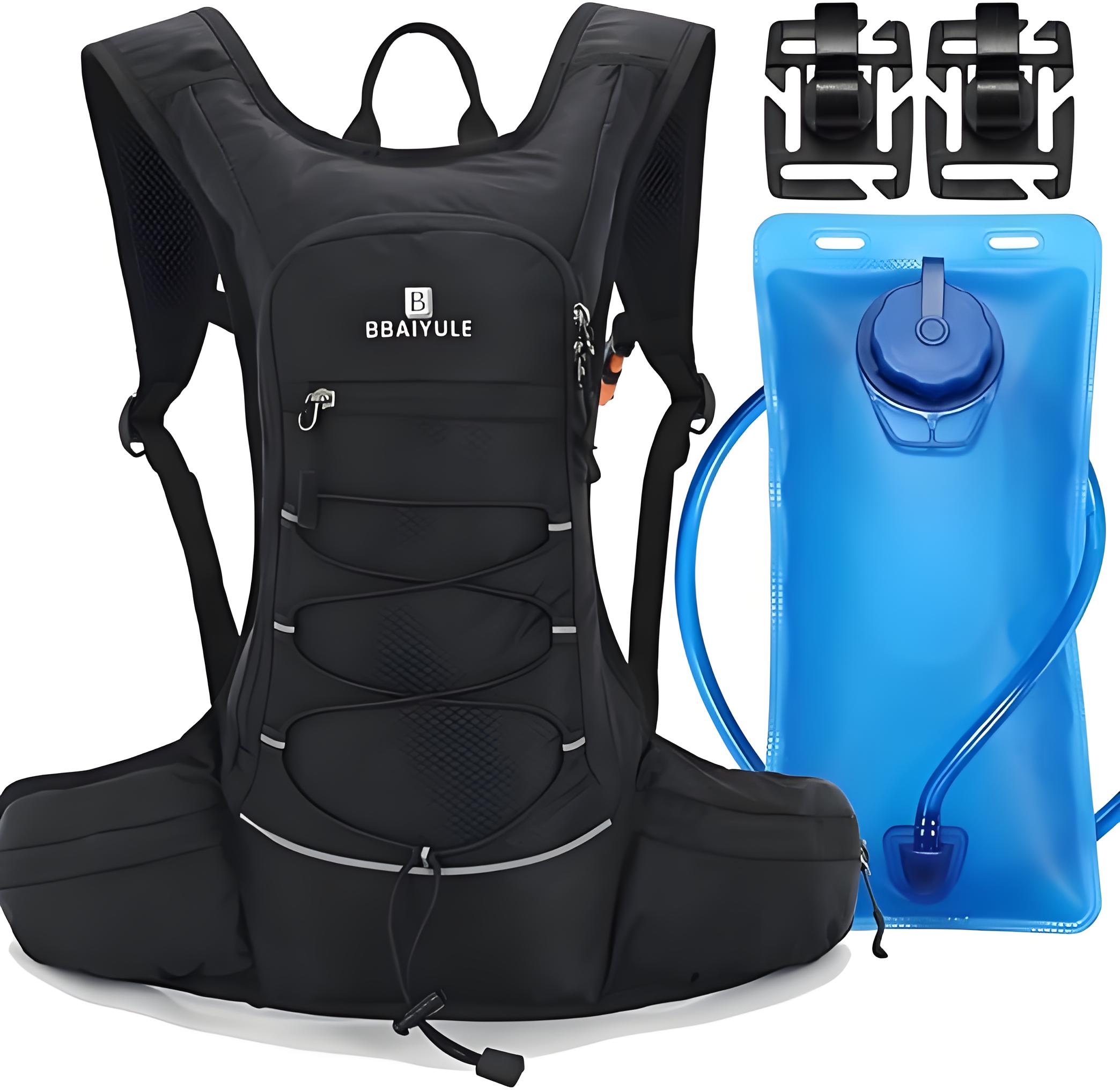
3. Comfort and Weight Distribution
While hydration backpacks are designed for comfort, they can sometimes feel less comfortable than expected, especially on long outings. The bladder’s weight, when full, can shift the pack’s center of gravity, causing strain on your shoulders or back. Some packs also lack adequate padding or ventilation, leading to discomfort during extended use.
Why It’s a Problem: Uneven weight distribution can lead to fatigue or soreness, particularly for runners or hikers carrying heavy loads. The bladder’s sloshing can also be distracting.
Real-World Impact: During a marathon, I noticed my hydration pack’s straps digging into my shoulders after a few hours, making me wish I’d chosen a better-padded model.
4. Limited Capacity and Versatility
Hydration backpacks prioritize water storage, which often limits their capacity for other gear. Most bladders hold 1-3 liters, and the pack’s compartments are typically small, designed for essentials like keys, snacks, or a lightweight jacket. If you need to carry more (e.g., camping gear), a hydration pack may not suffice.
Why It’s a Problem: For multi-day trips or activities requiring extra equipment, you might need a separate backpack, reducing the hydration pack’s versatility.
Real-World Impact: On a multi-day trek, I had to pair my hydration pack with a larger backpack, which felt cumbersome compared to a single, all-purpose pack.
5. Potential Odor and Taste Issues
Some hydration bladders, especially those made from lower-quality materials, can impart a plastic-like taste or odor to the water. This is more common with new bladders or those not cleaned regularly. Certain materials, like cheaper PVC, are more prone to this than high-grade TPU.
Why It’s a Problem: A bad taste can make drinking unpleasant, discouraging proper hydration during activities.
Real-World Impact: I once used a new, unwashed bladder on a short hike, and the water tasted faintly of plastic, which was off-putting until I cleaned it thoroughly.
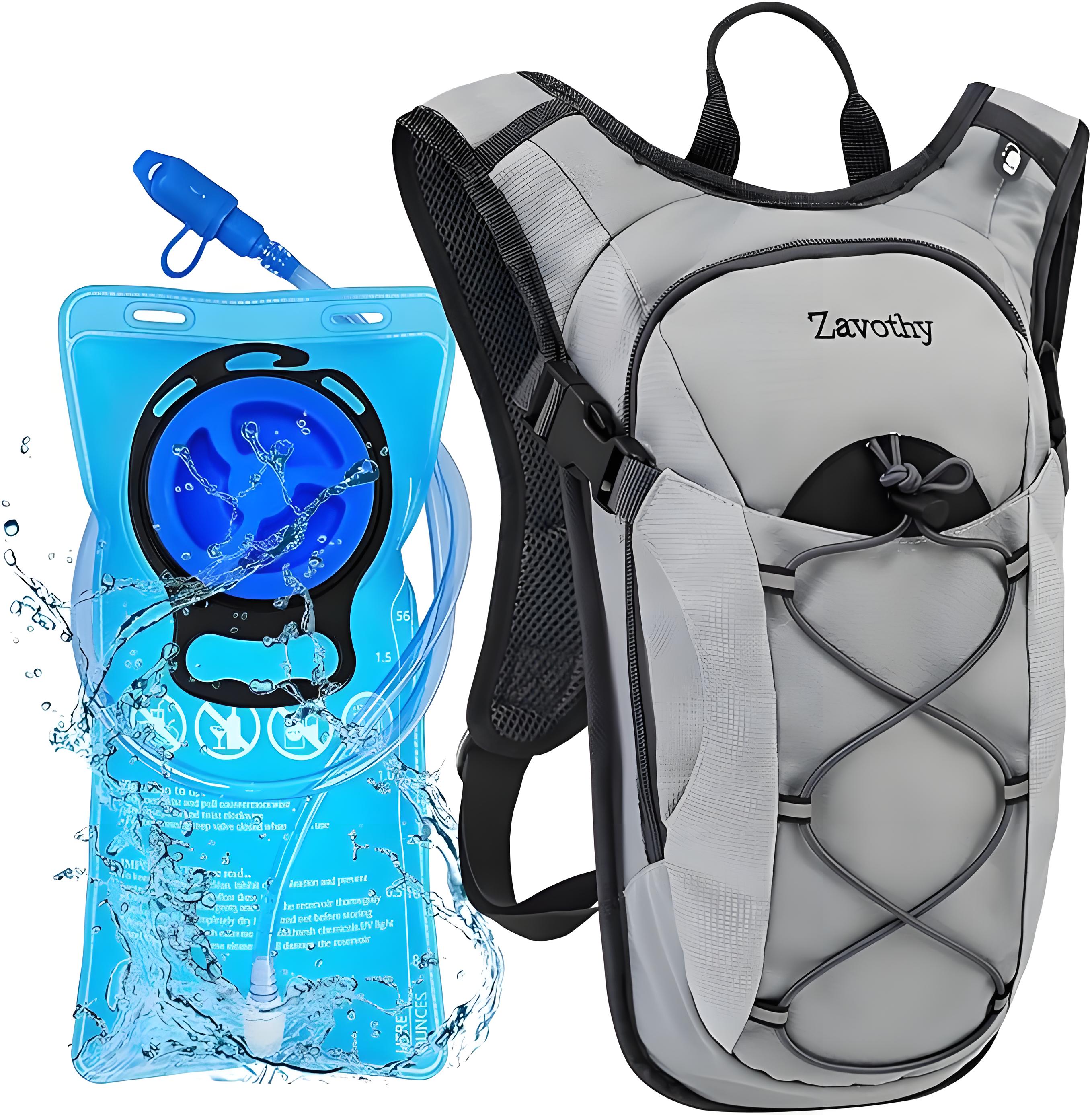
6. Compatibility and Replacement Challenges
Hydration backpacks often have proprietary bladder designs, meaning you can’t easily swap out the reservoir for a different brand or size. If the bladder wears out or leaks, finding a replacement can be tricky or expensive. Additionally, some packs aren’t compatible with larger bladders if you need more water.
Why It’s a Problem: Limited compatibility restricts upgrades or repairs, and replacement bladders can cost nearly as much as the pack itself.
Real-World Impact: A client once struggled to find a replacement bladder for an older hydration pack, forcing them to buy a new pack entirely.
Summary Table of Disadvantages
|
Disadvantage |
Description |
Impact |
Mitigation |
|---|---|---|---|
|
Cleaning Difficulty |
Hard to clean and dry bladder, tube, and mouthpiece |
Mold, odors, health risks |
Use cleaning kits, dry thoroughly |
|
Leakage/Durability |
Risk of leaks from seams or tubes; material wear |
Soaked gear, unreliable use |
Choose high-quality TPU bladders |
|
Comfort Issues |
Weight distribution, sloshing, or poor padding |
Fatigue, discomfort |
Select packs with ergonomic design |
|
Limited Capacity |
Small gear compartments, 1-3L water limit |
Insufficient for multi-day trips |
Pair with a larger backpack if needed |
Real-World Case Studies: Navigating Hydration Backpack Drawbacks
Let me share a couple of experiences that highlight these disadvantages and how they were addressed.
Case 1: Cleaning Woes on a Hiking Trip
On a week-long hiking trip in the Rockies, I used a hydration backpack for daily treks. By day three, I noticed a slight odor in the water, likely because I hadn’t dried the bladder properly between uses. I mitigated this by carrying a compact cleaning kit (brush and drying tabs) and rinsing the bladder with a vinegar solution at camp. Lesson learned: invest in a cleaning kit and make drying a priority.
Case 2: Leakage During a Trail Run
A friend training for an ultra-marathon used a budget hydration pack, only to have the bladder leak during a 20-mile run. The water soaked her spare clothes and energy gels, ruining her day. After this, she switched to a higher-quality pack with a TPU bladder and reinforced seals, which held up flawlessly. This showed me that spending a bit more on a durable bladder can prevent disasters.
These stories underscore that while hydration backpacks have their flaws, many can be managed with the right approach.
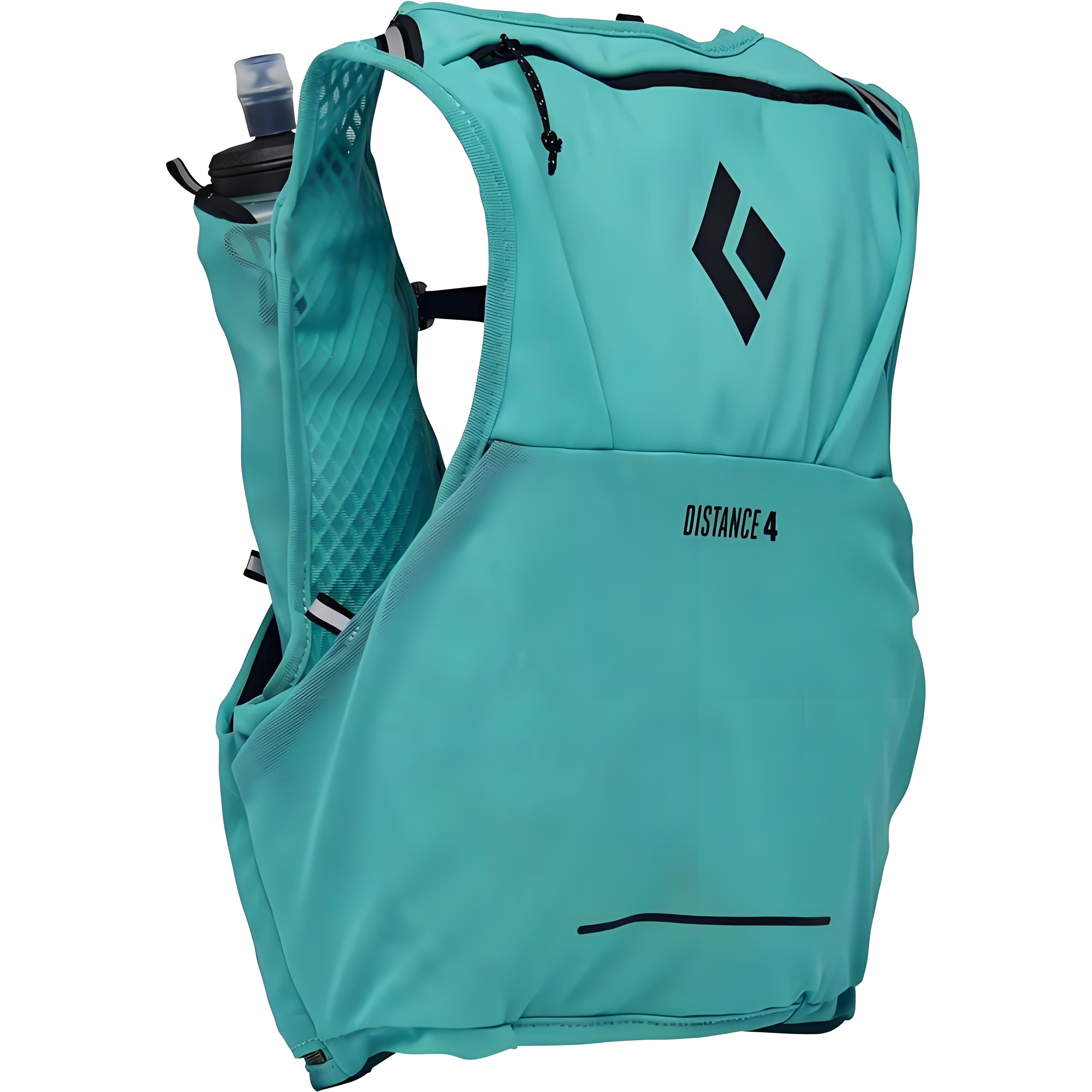
How to Address Hydration Backpack Disadvantages
Based on my experience, here are practical ways to mitigate the drawbacks of hydration backpacks:
Tackle Cleaning Challenges
Invest in a cleaning kit with a bladder brush, tube cleaner, and drying rack.
After each use, rinse the bladder with warm water and a drop of mild dish soap, then air-dry completely (prop it open with a paper towel if needed).
For stubborn odors, soak the bladder in a 1:10 vinegar-water solution for 10 minutes, then rinse thoroughly.
Use drying tabs (chemical-free moisture absorbers) to prevent mold in humid conditions.
Prevent Leaks and Improve Durability
Choose bladders made from high-grade TPU, which is more durable and less prone to leaks than PVC.
Check seals and connections before each trip, especially the tube and mouthpiece.
Avoid overfilling the bladder, as excess pressure can stress seams.
Store the pack in a cool, dry place to prevent material degradation.
Enhance Comfort
Select a pack with ergonomic straps, chest and waist straps, and breathable back padding.
Adjust the bladder’s position to balance weight, and fill it only to the needed capacity to reduce sloshing.
Test the pack on shorter outings to ensure it feels comfortable before long adventures.
Maximize Capacity and Versatility
For short trips (1-2 hours), a 1-2L bladder is usually enough. For longer outings, opt for a 3L bladder or carry extra water bottles.
Choose a pack with expandable compartments for gear like rain jackets or snacks.
For multi-day trips, pair the hydration pack with a larger backpack for additional storage.
Eliminate Odors and Taste
Before first use, rinse the bladder with a baking soda solution (1 tsp per liter of water) to neutralize plastic tastes.
Avoid storing sugary drinks or electrolytes in the bladder, as they promote bacterial growth and odors.
Regularly inspect and replace the mouthpiece if it shows wear.
Ensure Compatibility
Check if the pack allows universal bladder replacements or stick to models with widely available reservoirs.
When buying, confirm the pack’s bladder size matches your activity’s water needs (e.g., 2L for half-day hikes, 3L for all-day runs).
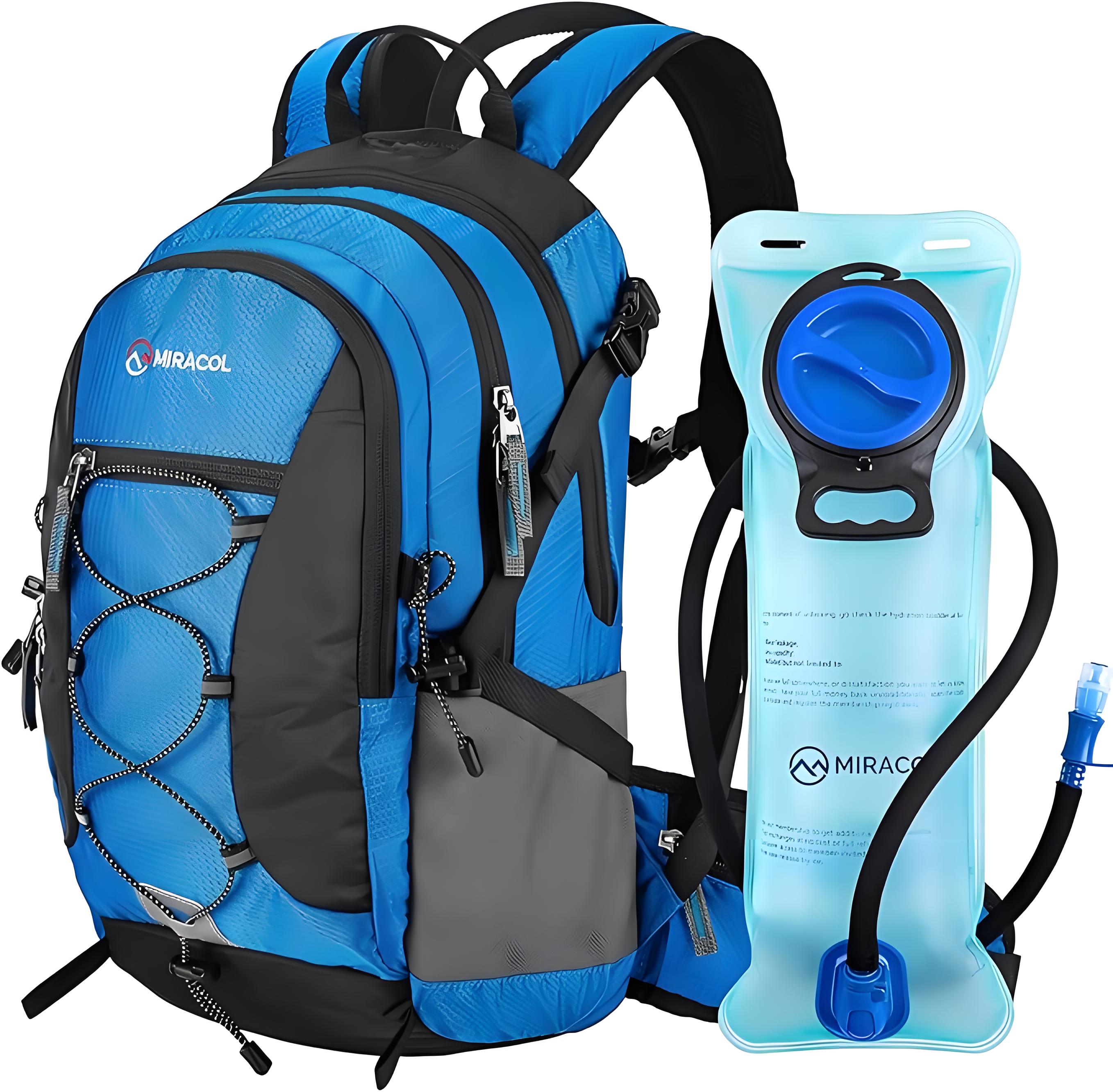
Choosing the Right Hydration Backpack
To minimize these disadvantages, consider these tips when selecting a hydration backpack:
Prioritize Quality: Invest in a pack with a high-grade TPU bladder and robust seals to reduce leakage risks.
Match Your Activity: Choose a compact pack for running or cycling, or a larger one with gear compartments for hiking.
Check Fit and Features: Look for adjustable straps, ventilation, and easy-access tube designs for comfort and convenience.
Read Reviews: User feedback often highlights real-world issues like cleaning difficulty or durability, helping you avoid subpar models.
Conclusion: Weighing the Pros and Cons
Hydration backpacks are a fantastic tool for staying hydrated during outdoor activities, but they come with notable drawbacks like cleaning challenges, leakage risks, and comfort issues. However, with proper care—using cleaning kits, choosing durable materials, and selecting a well-designed pack—these disadvantages can be managed effectively. Whether you’re a hiker, runner, or cyclist, understanding these limitations helps you make an informed choice and get the most out of your gear.
If you’re considering a hydration backpack, think about your activity type, how often you’ll use it, and your willingness to maintain it. With the right approach, you can enjoy the convenience of hands-free hydration without the hassle. Got more questions about hydration backpacks? Drop them in the comments, and I’ll share more tips from my adventures!
Related Q&A
1. How often should I clean my hydration backpack?
Clean it after every use with warm water and mild soap, and dry thoroughly to prevent mold. For heavy use (e.g., daily runs), a deep clean with vinegar or baking soda every month is a good idea.
2. Can I prevent leaks entirely with a hydration backpack?
No gear is 100% leak-proof, but choosing a high-quality TPU bladder with reinforced seals and checking connections before use significantly reduces the risk.
3. Are hydration backpacks worth it for short hikes?
For hikes under 2 hours, a water bottle might suffice. For longer outings or hands-free convenience, a hydration pack’s benefits outweigh its drawbacks, especially for runners or cyclists.
4. What’s the best way to dry a hydration bladder?
Prop the bladder open with a paper towel or use a drying rack. Hang the tube and mouthpiece separately to ensure all parts air-dry completely.
5. Can I use a hydration backpack for drinks other than water?
It’s best to stick to water to avoid bacterial growth and odors. If you must use electrolytes, clean the bladder immediately after use to prevent residue buildup.